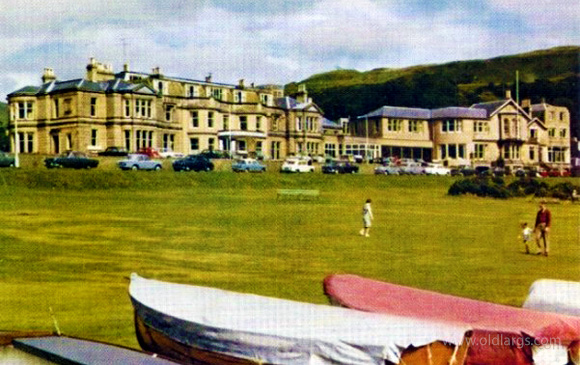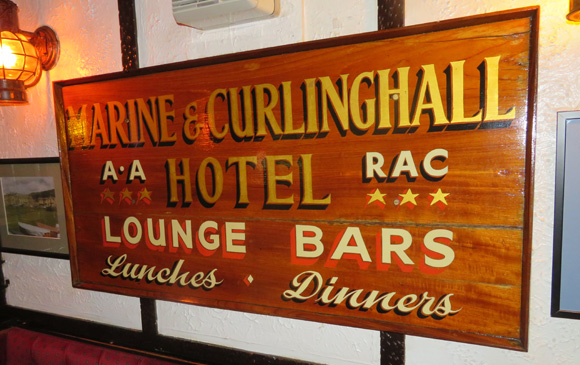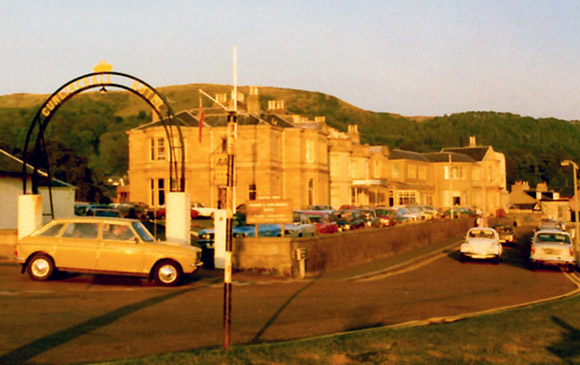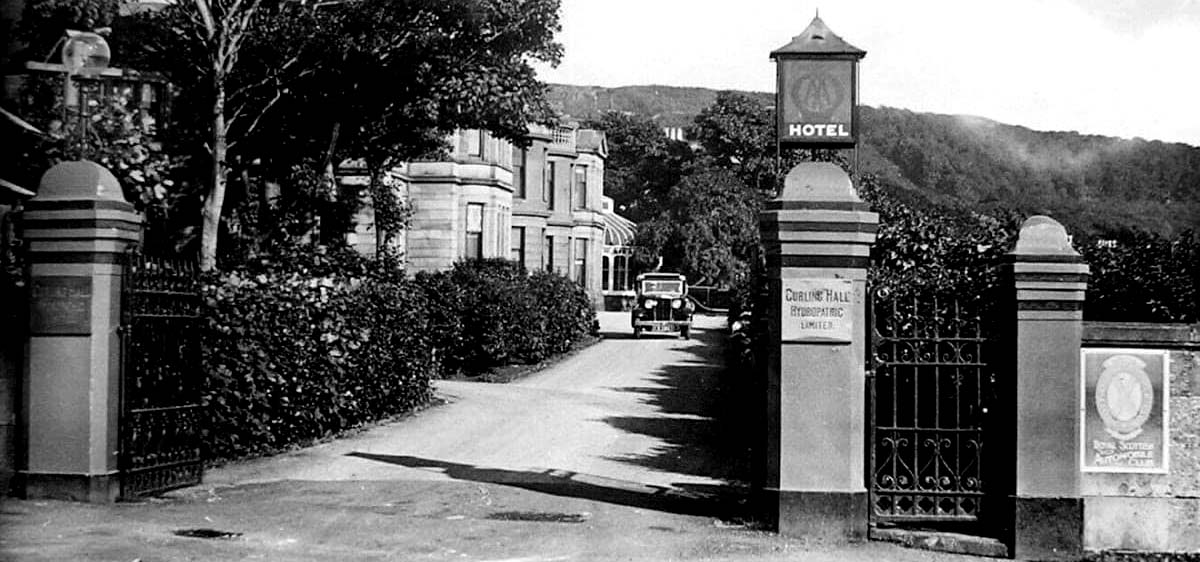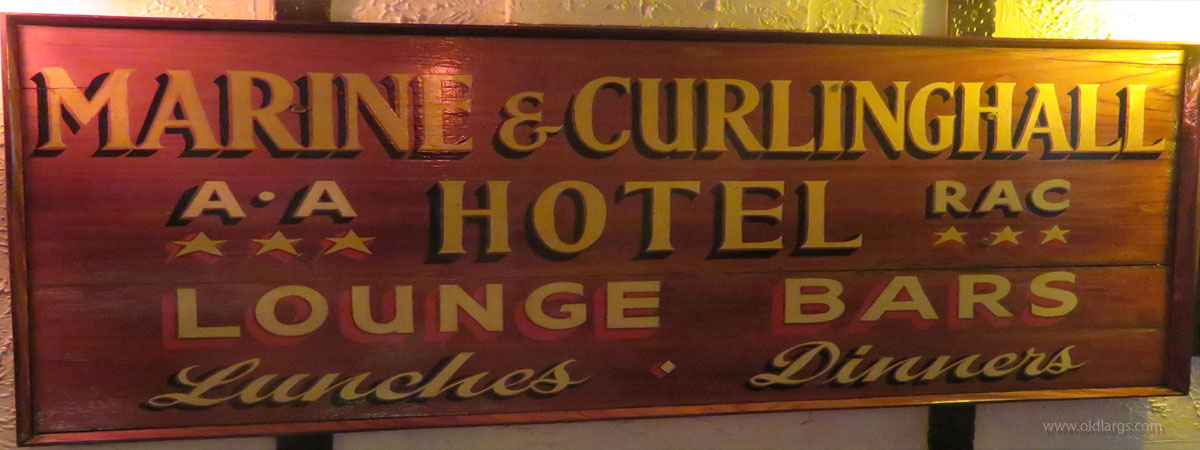
The Marine and Curlinghall Hotel
We are now crossing John Street which takes us to the Curlinghall Flats. This used to be the location of the Marine and Curlinghall Hotel.The Marine and Curlinghall was a very popular hotel for visitors and holiday makers throughout the 1930s and up to the early 1980s. It started as two separate buildings being The Barra House and the Curling Hall. The original Curlinghall was built by Dr John Cairnie in 1813 and was one of the first large mansions to be built in Largs. Dr Cairnie was from Glasgow and was a retired surgeon from the East India Company. He lost his left arm in a gunpowder explosion but remained an enthusiastic curler. Dr Cairnie was the founder and first president of the Royal Caledonian Curling Club. He made Scotland's first artificial curling pond at Curling Hall. It was a pavement of finely dressed freestone three inches below ground level and flushed with a little water when frost was approaching. Dr Carine was very proud of his rink and if the wind caused the ice to be rough he would employ two joiners from Largs to plane the ice smooth.
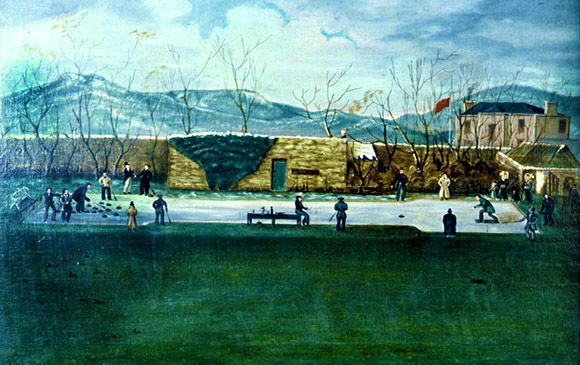
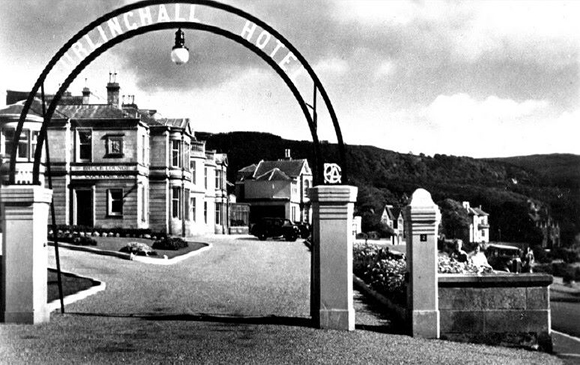

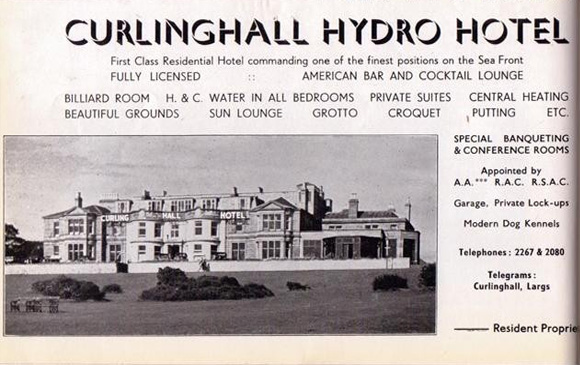
In 1892 Clark had the house extended by the architect, Thomas Graham Abercrombie, and refurbished by Wylie & Lochhead, Glasgow. This included the addition of two new wings to the building. In 1911 Curling Hall was occupied by Mrs William Clark widow of the head of the American branch of Anchor Thread. Mr Clark's nephew then came to the Curling Hall in 1913. He extended the grounds by building stables and conservatories. The curling rink was removed and replaced with a tennis court.
By 1920 a syndicate had purchased the Curling Hall and reopened as the Curling Hall Hydro. It boasted central heating and electric lighting. All kitchen appliances were powered by electricity. This occurred eight years before the people of Largs were connected to the Ayrshire Electricity Board. Later in 1946 The Curling hall was bought Mr Wightman for £13,000, he in turn sold to Mrs Logan of the Castle Hotel for £52,000 in 1953. The Logan Family joined it to the Marine Hotel in 1953 by adding a ballroom which could seat 600. In run by Catherine Logan's son, Fulton, and his aunt Bessie.The other building which made up the Marine and Curlinghall Hotel was originally called Barra House. It was a large villa overlooking Broomfields built around 1833 by a Rev William King. During WW1 Barra House was a convalescent hospital for wounded servicemen. In 1933 Mrs Catherine Logan who had made her fortune as a Glasgow retail drapery purchased Barra House. Shortly after the converted the villa into a hotel and opened it as The Barra Hotel. Later it was renamed to The Marine Hotel.
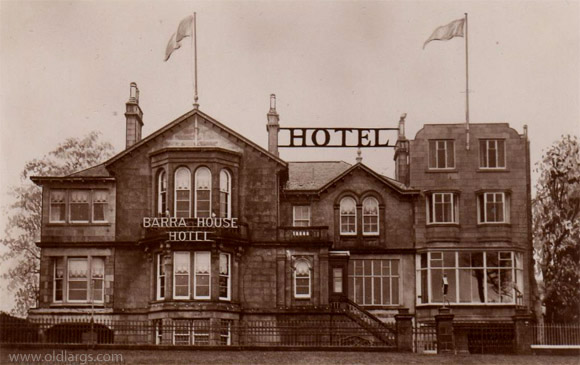

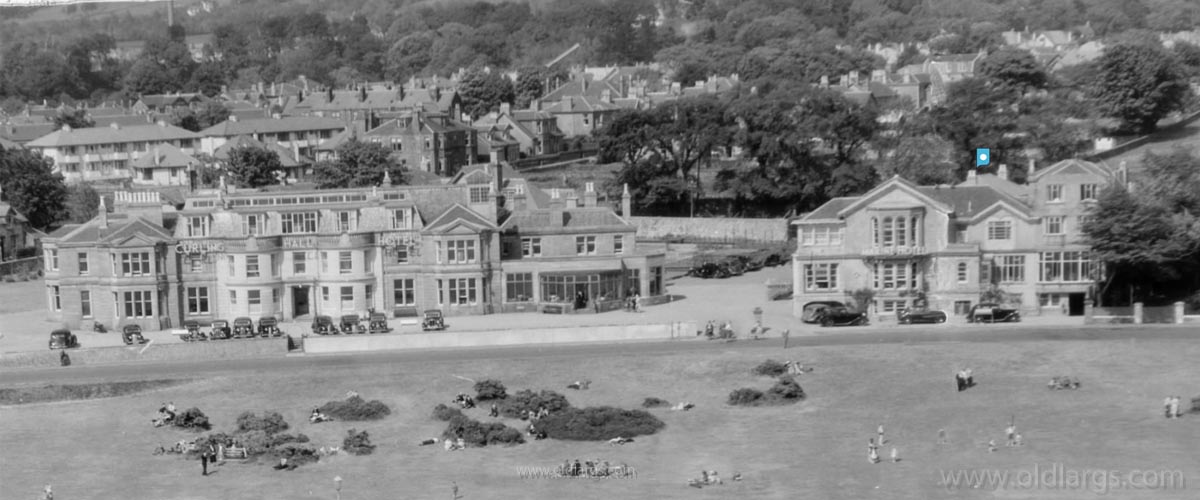
The figures for the Marine and Curlinghall Hotel are impressive. It had 90 bedrooms, a dining capacity for 350, a ballroom which could hold 600 dancers and on Special occasions another 350 diners. Various cocktail lounges, facilities for showing Cinemascope movies and an all year staff about 50. At its peak the kitchen provided about 1000 meals a day. The grounds had a rose garden, vinery and fruit houses. A glassed-over grotto had running water, a fish pond and rock plants. Two new tennis court were made and the older court covering the rink was now a bowling green. The tennis pavilion even had a dark room for photography enthusiasts.
By the late 70s the hotel became unprofitable and in 1983 the hotel was sold to John Lawrence Builders of Glasgow to be demolished. Before that the contents were auctioned. The sale lasted three days with 780 lots being bought by 300 buyers from all over the world. The top price was £7,300 for the dining room's oak paneling. The site remained undeveloped for five years until today’s houses and flats were built.One original part of the hotel can still be seen in the town today. The main sign for the hotel which stood at the entrance to the hotel was recovered from a skip by the owner of Ye Old Anchor pub. It now hangs on the wall of the pub just opposite the bar.
